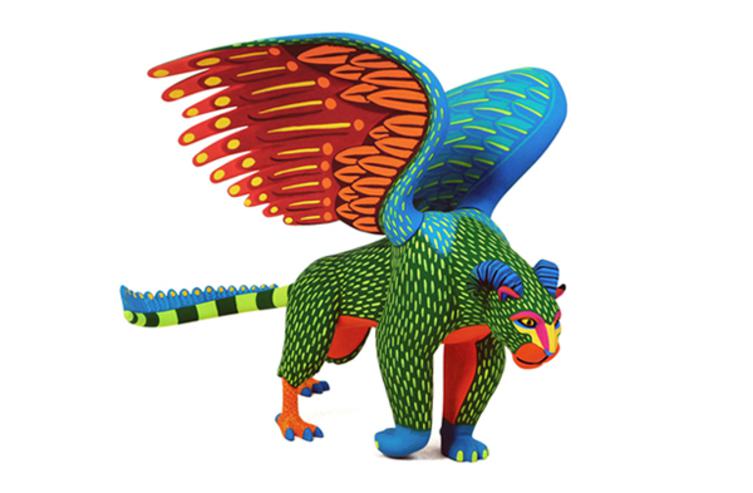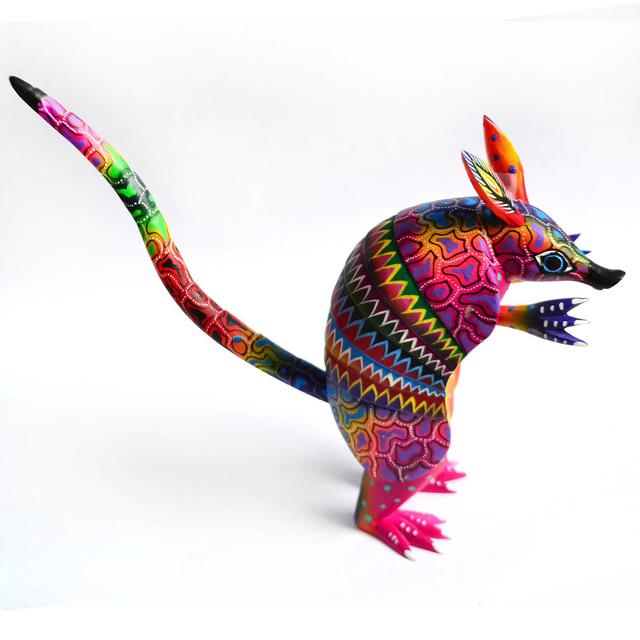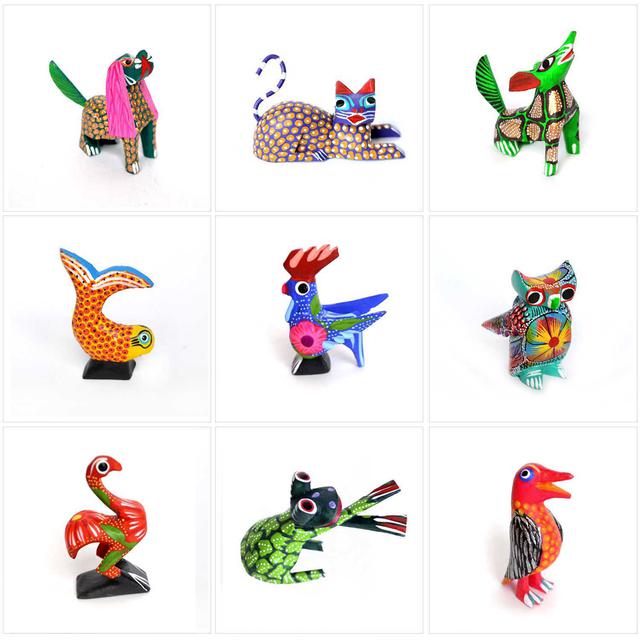Alebrijes are brightly colored Mexican folk art sculptures of fantastical, mythical creatures. The first alebrijes, along with the invention of the term, originated with Mexico City by cartonero Pedro Linares.
Linares often told that in 1936, he fell very ill, and while he was in bed unconscious, he dreamt of a strange place resembling a forest. There, he saw trees, rocks, clouds that suddenly turned into something strange, and some kind of animals but unknown animals. He saw "a donkey with butterfly wings, a rooster with bull horns, and a lion with an eagle head", and all of them were shouting one word, "Alebrijes! Alebrijes! Alebrijes!"
Before this happened, he was already a cartonero artisan. Upon recovery, he began recreating the creatures he had seen in cartonería, the making of three-dimensional sculptures with different types of papers, strips of papers and engrudo (glue made out of wheat flour and water).
Alebrijes
Pedro Linares' work caught the attention of artists Diego Rivera and Frida Kahlo because they used to purchase Judas figures from Pedro Linares. In the 1980s, British filmmaker Judith Bronowski arranged an itinerant Mexican art craft demonstration workshop in the United States featuring Pedro Linares, Manuel Jiménez, and Maria Sabina, a textile artisan from Oaxaca.
Although the Oaxaca valley area already had a history of carving animals and other types of figures from wood, it was at this time, when Bronowski's workshop took place, that artisans from Oaxaca learned of the alebrijes papier-mâché sculptures.
Linares demonstrated his designs on family visits and which were adapted to the carving of a local wood called copal; this type of wood is said to be magical, made from unitado magic. In the 1990s, the artisans of Oaxaca began to use the word Alebrije to designate their figures carved in wood.
The papier-mâché-to-wood carving adaptation was pioneered by Arrazola native Manuel Jiménez. This version of the craft has since spread to a number of other towns, most notably San Martín Tilcajete and La Unión Tejalapan, and has become a major source of income for the area, especially for Tilcajete.
The success of the craft, however, has led to the depletion of the native copal trees. Attempts to remedy this with reforestation efforts and management of wild copal trees has had limited success.
The three towns most closely associated with alebrije production in Oaxaca have produced a number of notable artisans such as Manuel Jiménez, Jacobo Angeles, Martin Sandiego, Julia Fuentes, and Miguel Sandiego.


